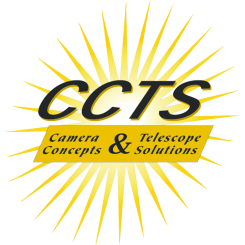Optical Enhancements: Focal Reducers, Field Flatteners and Coma Correctors
Some Essential Information Regarding the Use of Focal Reducers/Flatteners and "Backfocus"
Most focal reducers for refractors have a working distance (or back focus distance) of 55mm. This standard distance is a consequence of the design of DSLR cameras for which the distance of the sensor to the outer edge of the mount is about 45 mm, while the T-ring that attaches to the flange for astrophotography is about 10mm thick. On the camera side, the focal reducer has male M42x0.75 or M48x0.75 threads that attach directly to the T-ring (with an M42-M48 adapter if necessary). If you are using a camera that has a back focus of less than 55mm, additional spacer rings will be required between the reducer and the camera. It's important to match the back focus to within a millimeter or two to get an optimal image, which is particularly important with cameras with larger sensors.
Focal reducers for many SCTs and their flat-field equivalents usually have a back-focus distance of 105mm. In this case, an additional T-adapter (with an optical length of 50mm) is needed to get the spacing correct for a DSLR or other camera with a 55mm back focus. Most all SCT manufacturers sell such SCT-T adapters with the correct optical length.
For Ritchey-Chretien telescopes such as those manufactured by GSO, there are dedicated focal reducers with a reduction factor of 0.7x to 0.8x. GSO, for example, has a 0.75x reducer for RC scopes with a back focus of 80mm, which is usually enough room for a wide range of astronomy cameras and accessories and spacers as needed.
The bottom line is this: you should check with the manufacturer of the focal reducer/flattener in order to determine the amount of backfocus needed for your particular imager/camera.


